The Ultimate Guide to Copywriting: What It Is & How to Use It
Have you ever read a social media post that seemed to speak directly to you, almost as if the person who wrote it knew exactly what you were feeling? Or maybe you’ve stumbled onto a landing page that made you think, “Yes, that’s exactly the product I need.” Behind these moments of connection is something called copywriting, a skill that blends a bit of psychology, creativity, and marketing know-how to persuade or inspire people to take action.
In my own journey as a writer, I’ve come to see copywriting as the heartbeat of modern marketing. Sometimes I compare it to a conversation with a friend—if you can capture the right tone and make your message valuable, people will pay attention, even in a world where we’re all bombarded by countless promotions. Yet, “What is copywriting and how does it work?” still remains one of the biggest questions I hear from folks stepping into marketing or content creation for the first time. If that sounds like you, you’re in the right place.
Let’s dive into the nitty-gritty of how good copywriting can shape perceptions, drive sales, and even launch entire careers. I’ll walk you through the basics, share a few personal experiences, talk about the different types of copy, and show you the best ways to use it for your brand or business.
A Quick Look at Copywriting
Copywriting is the art (and sometimes science) of writing text—called “copy”—that aims to prompt a specific action. Often, that action is a purchase, but it can also be signing up for an email newsletter, downloading an e-book, following a brand on social media, or even just reading another blog post. Unlike many forms of creative writing, copywriting usually focuses more on persuasion and clarity than on storytelling for its own sake. That’s not to say creativity doesn’t matter—far from it. The best copy often finds a way to tell a compelling story that hooks people right in.
There’s a really important distinction I like to make: good copywriting helps a reader feel that the product or service being offered could genuinely make their life easier or better. It never feels pushy, desperate, or dishonest. While the main goal is often to sell something, the trick is doing it in a way that resonates so strongly with a target audience that they practically convince themselves.
Why Copywriting Matters
If you’ve ever wondered how some companies manage to stand out in a sea of competitors, copywriting is a big part of that equation. We live in a time where hundreds (if not thousands) of ads, banners, posts, and email subject lines are clamoring for our attention each day. If you as a business owner, marketer, or individual trying to share an idea can’t connect quickly, your message might fizzle out before anyone really “gets” it.
That’s where effective copywriting comes to the rescue. It pinpoints exactly what your potential customers care about, frames an offer or message around their core interests or challenges, and then nudges them toward wanting more. This is crucial whether you’re a multinational brand focused on brand awareness or a small, family-run startup hoping to land those initial sales.
I still remember one of my first major copywriting jobs, where I had to rewrite the entire website for a new travel gear company. Their old text was flat, stuffed with bullet points listing product features: “Made of heavy-duty nylon.” “Water-resistant zippers.” “Adjustable shoulder straps.” Sure, all of that was true, but none of it spoke to the adventurous spirit of the travelers who might actually buy these products.
By diving into the story of someone trekking through a rainforest or hiking a rugged mountain trail, we repackaged that same information into vivid descriptions. Suddenly, the gear felt like an empowering tool for a traveler’s next epic journey. And guess what? The product pages started converting a lot better. That’s the power of a good copywriter at work.
Exploring Different Types of Copywriting
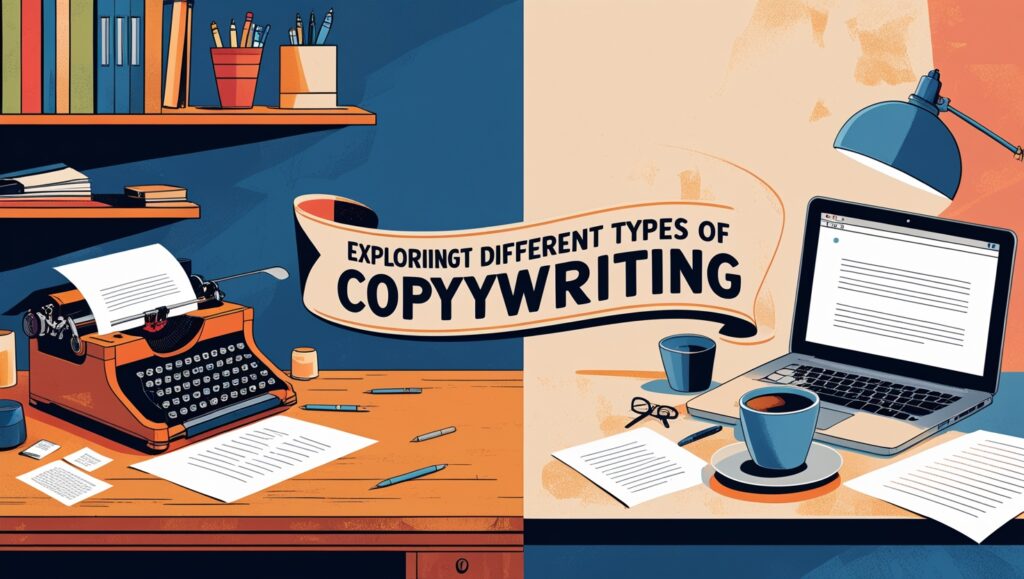
A lot of people don’t realize just how wide-ranging the field of copywriting can be. Each type has its own unique style and techniques:
Direct Response Copywriting
If you’ve ever clicked “Buy Now” or typed in your email address after reading a convincing sales letter, you’ve encountered direct response copywriting. It’s direct because it aims to spark an immediate action, usually tied to a specific offer. You’ll see this style used in sales pages, landing pages, and sometimes those classic (yet still popular) direct mail letters. Direct response copy thrives on urgency, emotional triggers, and a clear payoff—like promising a better life, the elimination of frustrations, or a chance to snag an exclusive deal.
I once worked on a direct mail piece for a nonprofit. The entire pitch asked readers for a small monthly donation. We led with a heartfelt story about how even a modest contribution could feed a family for a week. The “ask” was direct, but it was grounded in empathy. This combination—factual data about where their money would go plus an emotional narrative—compelled a lot of donors to sign up for monthly giving.
SEO Copywriting
While direct response copywriting aims for instant conversions, SEO copywriting seeks to play the long game by ranking well on search engines. Here, the focus is on weaving relevant keywords (like “type of copywriting” or “field of copywriting”) seamlessly into your text, so Google’s algorithms know exactly what your page is about. But if that’s all you do—just loading up on keywords—your content can end up sounding robotic and off-putting. The trick is to write something that appeals to both readers and search engine bots.
For anyone running a blog or website, SEO is one of the best ways to draw organic traffic. Imagine crafting a blog post that answers a common question your prospects ask, using clear subheadings and relevant phrases. Over time, that page could become a magnet, bringing curious visitors who are already interested in your niche. Done right, it’s a huge driver of potential clients and can reduce your reliance on paid ads.
Technical Copywriting
Companies in software, engineering, healthcare, and other specialized fields often need technical copywriters who can transform complex ideas into digestible, readable language. This style shows up in white papers, case studies, product manuals, and sometimes highly detailed marketing materials. The key is not just rattling off features but highlighting how those features help solve pain points.
For instance, if you’re writing about an advanced data analytics tool, you’ll need to break down how it actually benefits a brand: Does it save them money? Does it cut down on hours spent manually sifting through spreadsheets?
Good technical copy steps into the shoes of a potential buyer and says, “Here’s why you should care about these features.” When it’s done well, it can make even the most high-level concepts feel accessible.
Creative Copywriting
On the more playful side of things, creative copywriting is where you’ll find taglines, slogans, witty headlines, and story-driven ads that focus on entertainment or emotional impact. Advertising campaigns often hire entire teams, including art directors and creative leads, to dream up memorable messages that stick in your mind.
If you think of a brand or product with an unforgettable slogan, you can almost bet that there was a creative copywriter behind the scenes. For them, the process often involves brainstorming a hundred different lines until they land on that one gem that captures the essence of a brand in just a few words.
Where Copywriting Shows Up in the Real World
Copywriting isn’t limited to billboards or magazine ads. In fact, you’re encountering it multiple times a day, even if you don’t realize it:
- Blog Posts and Articles: While these can be educational or entertaining, they still often contain subtle elements of persuasion. You might see a recommendation for a product or a call to leave your email address for updates. A blog article can direct readers to take some form of action, whether it’s signing up for a newsletter or exploring more pages on a site.
- Social Media Posts: In the swirl of Facebook, Instagram, LinkedIn, Twitter, TikTok, or YouTube, attention spans are incredibly short. A good social post stands out within seconds. It might be a snappy caption or a brief story that resonates deeply with followers. This quick-hit approach is also part of content marketing, where you offer something engaging so followers stick around long enough to see what else you have to say.
- White Papers and Case Studies: These are key in B2B contexts. Let’s say you’re trying to sell an expensive piece of software to large organizations. They’re unlikely to buy based on a quick mention; they need in-depth resources that detail exactly how your solution reduces overhead costs or streamlines operations. That’s where a white paper or case study shines. It offers proof. And yes, it’s still persuasion—it just looks more formal.
- Landing Pages and Sales Pages: These are dedicated pages on a website designed to do one thing, like collect leads, sell a product, or gather sign-ups for a webinar. They usually open with a striking headline, follow up with a few bullet points or short paragraphs describing benefits, then end on a strong call-to-action. The entire page is structured to keep readers engaged long enough for them to say, “Okay, I’m in.”
- Product Descriptions and E-Commerce: Consider how often you’ve read a product description that instantly made you want to hit “Buy.” Now think of all the times you’ve read one that left you cold. Quality descriptions don’t just say, “This blender has a 500-watt motor and stainless-steel blades.” They paint a picture of how you’ll whip up smoothies every morning, saving time and feeling healthier.
How Copywriting Fits into Marketing
It’s helpful to think of copywriting as the language your marketing messages speak. Visuals may grab attention, but words do the explaining, seducing, and motivating.
Connecting with Your Audience
To me, this is the heart of everything. Who’s reading your copy? What are they worried about, excited for, or frustrated with? If you can step into their shoes and address those feelings, you’re light-years ahead of competitors who only talk about their product. In a sense, you become a trusted advisor, not just a salesperson.
Boosting Brand Awareness
Consistent copy across social media posts, blog articles, and web pages helps people identify your brand’s personality and values. This consistency might be playful or serious, depending on your target market. Over time, your brand voice becomes recognizable in a crowded marketplace. People see your posts or content and instantly think, “Oh, I know them.” That familiarity builds trust.
Creating Emotional Connections
Buying decisions often start with feelings. Maybe someone wants to feel more confident or hopes to impress their colleagues. Maybe they long for comfort and security. By weaving these desires into your messaging, you give people a reason to care. Whether you’re selling a course on public speaking or a cozy blanket, you can highlight how it solves an internal, emotional need. And that’s often more powerful than a simple list of features.
Encouraging Action
A big part of marketing campaigns is guiding people toward that final step—making a purchase, scheduling a call, or subscribing. Copywriting acts like a friendly hand, leading readers from casual interest to a specific decision. Think about it: even something as simple as a clickable button often has carefully chosen words, like “Join Now” or “Claim My Discount,” to stir excitement or urgency.
Peeking into the Copywriting Process

Wondering how a copywriter goes from a blank page to something that wows clients and readers alike? While each person might have a slightly different system, here’s a general rundown:
Research and Planning
I always start by gathering as much information as possible about the client’s business or product. Who’s the audience? What are their key challenges or desires? How do competitors position themselves? If search engine optimization is relevant, I identify which keywords I’ll need. Then I make a simple outline of the points I’ll cover, sort of a mental map that keeps me on track as I write.
Drafting
In the drafting phase, my main goal is to get ideas onto the page before I lose them. If I stop every sentence to edit, I might never finish. So I let the words flow and worry about perfection later. This is also where I think about the emotional connection: how can I bring out the feeling that might urge someone to keep reading?
Editing and Refining
Once there’s a rough draft, I switch into editor mode. I cut out anything unnecessary, tighten paragraphs, and double-check that my transitions make sense. If it’s a landing page, I make sure each section logically follows the one before it and that I’ve used subheadings or bullet points to keep the text scannable.
Focusing on User Experience
Finally, I consider how people will actually read this copy. Are they on mobile? Will huge blocks of text turn them off? Does the text need bold highlights or shorter paragraphs to hold attention? Sometimes the difference between a flop and a success is purely the readability factor.
Collaborating with Copywriters
In-House vs. Freelance
Businesses that generate a lot of marketing materials often hire in-house copywriters to handle everything from social posts to big brand campaigns. This can create a strong internal culture and consistent voice. Smaller or more budget-conscious companies might hire a freelance copywriter on a project-by-project basis, which is great if you only need occasional help or want fresh perspectives.
Finding Skilled Copywriters
Whether you choose an agency, a freelancer, or bring someone on-staff, look for signs they can truly handle your needs:
- A solid portfolio that matches the style you’re after.
- Testimonials or references from past clients.
- Good communication skills—a willingness to listen, ask questions, and accept feedback.
- An understanding of marketing fundamentals, not just writing ability.
- Familiarity with SEO, if digital content is a big part of your plan.
Working Together
If you do hire someone to write for you, remember that clarity in the brief can make or break a project. If you can articulate the problem you want solved and the action you want readers to take, it’s a game-changer for the copywriter. I’ve found that the happiest clients are the ones who invest a little time up front, giving me a clear roadmap of brand values, voice, and objectives.
Thinking About a Copywriting Career?
If you love words, marketing, and a bit of psychology, you might consider becoming a copywriter yourself. It’s a field in high demand, and the U.S. Bureau of Labor Statistics projects steady need for writers as the digital space grows.
Skill Sets You’ll Need
First off, you need a solid handle on language—spelling, grammar, all that good stuff. But that’s the bare minimum. What really sets a good copywriter apart is empathy and persuasion. Can you figure out what someone wants or fears, then express it in a way that connects deeply? Do you enjoy understanding why people do what they do? That curiosity is gold in copywriting.
Formal Training or Self-Taught?
Some people go through formal programs in communications, journalism, or marketing. Others, like me, assemble their skills over time with a mix of hands-on projects, reading, and short courses. Organizations such as AWAI (American Writers & Artists Institute) run specialized programs that walk you through everything from direct response copywriting to seo copywriting. There are also free online resources, webinars, and blogs from recognized industry pros. You don’t necessarily need a fancy degree, but a thirst for knowledge is non-negotiable.
Building a Portfolio
Clients want to see what you can do. If you’re starting from scratch, consider writing unpaid samples or volunteering for a local business or charity. They get free content; you get a piece for your portfolio. You can also guest post on industry blogs, offering your expertise in exchange for a byline. Over time, you’ll have real examples that prove your abilities.
Job Hunting
From job boards like ProBlogger and LinkedIn to freelance marketplaces like Fiverr or Upwork, there are plenty of ways to find copywriting jobs. Don’t overlook networking, either—tapping your personal or professional circles can lead to surprising opportunities. If stability is important, check out larger companies that have on-staff copywriters or even entire teams. On the other hand, going freelance can offer a flexible schedule and the freedom to choose your clients, although it comes with the need to manage your own finances, marketing, and client relationships.
Best Practices for Standout Copy
Address Pain Points Directly
One of the fastest ways to connect with readers is to show that you understand their problems or aspirations. Whether it’s saving money, improving health, or achieving success, people naturally pay attention to anything that promises to ease their worries or fulfill a desire. Be specific. Instead of saying, “Our solution makes your life easier,” show exactly how that happens.
Weave in Persuasion
Like I mentioned earlier, persuasion isn’t about tricking people. It’s about showcasing genuine benefits and supporting them with social proof (like testimonials or case studies). When you say your gadget can help a busy parent prep meals quicker, back that up with a real story. Maybe highlight a parent who used the gadget for a month and saved an hour each day. Hard evidence builds trust.
Use SEO Wisely
For online content, you can’t ignore search engine optimization. Identify phrases people might type into Google—like “great copywriting tips” or “types of copywriting.” Slip them naturally into your headings, subheadings, and text. That said, never make your content unreadable just to chase search rankings. Write for human beings first, then optimize for algorithms. Google rewards valuable, well-written pages.
Be True to Your Brand Voice
If your brand is playful, let that come through. If it’s more formal, keep a professional tone. People can sense when a voice shifts erratically, and it breaks trust. Once you define your brand personality, try to keep it consistent across social media posts, email campaigns, blog content, and more.
Services and Career Opportunities in Copywriting

Agency Copywriters
Advertising or digital marketing agencies typically juggle multiple clients at once. As a copywriter in this setting, you’ll collaborate with designers, project managers, and account execs. The variety can be exhilarating—you might write a sassy tagline for a fashion brand one day and a serious newsletter for a healthcare company the next.
On-Staff Copywriters in Larger Companies
Big organizations often have enough ongoing projects—like press releases, internal communications, new product launches—to warrant full-time on-staff copywriters. This route can offer job security and a chance to become deeply familiar with a single brand. Over time, you might transition into a senior copywriter role where you mentor others and shape overall messaging strategy.
Freelance Copywriter Life
Freelancing offers immense flexibility. You can set your own hours, pick and choose clients, and sometimes even work from a café or your living room couch. The downside is handling the “business” side—sending invoices, negotiating contracts, paying taxes. But if you’re willing to hustle, it’s a fantastic way to experience different industries and steadily build your income based on your own efforts.
Expanding Your Services
Plenty of copywriters branch out over time. You might start offering content marketing strategy, social media management, or even public relations writing. I know a few copywriters who fell in love with video production and began scripting YouTube videos for businesses. Others move into consulting, guiding entire marketing campaigns. There’s really no limit once you have a firm grasp on how to influence and engage an audience with words.
Wrapping It Up (and Encouraging Action!)
Copywriting might seem mysterious if you’re new to the field, but it’s really just about connecting with people through words, addressing their needs, and suggesting a path forward. It spans a huge range of formats—blog posts, sales pages, social media content, white papers, you name it—and it intersects with other disciplines like design, SEO, user experience, and brand strategy.
By now, I hope it’s clear why good copywriting is so essential. In a world where we’re constantly scrolling and skimming, you want to grab attention with a message that feels real and relevant. The more you can empathize with your audience, the more likely they are to respond—be that by clicking “Buy,” signing up for a newsletter, or even just remembering your brand the next time they have a related need.
If you’re a business owner or marketer, consider teaming up with a professional copywriter (or honing your own skills) to enhance everything from landing pages to social media posts. If you’re a budding writer, explore this field by picking a niche—like technical copywriting or direct response—and build a killer portfolio that demonstrates your ability to persuade and engage.
Think of this guide as your starting point. Experiment with different approaches, track what resonates with your audience, and never be afraid to rewrite, refine, and rewrite again. That’s what keeps the craft alive and interesting. And if you found this article helpful, I’d love it if you shared it with friends or colleagues who might be curious about how copywriting can work for them. Feel free to drop a comment about your own experiences with copywriting or any tips you’ve discovered along the way. We can all learn from each other, and who knows—your insights might be exactly what another reader is looking for.
Ready to keep learning? Resources like the American Writers & Artists Institute (AWAI), Fiverr’s Copywriting Guide, and Indeed’s advice on How to Become a Copywriter offer further reading on everything from setting your rates to mastering direct response copywriting. There’s a whole world of knowledge out there to help you sharpen your pen (or keyboard) and make your mark as a great copywriter. Good luck, have fun, and keep writing words that move people!
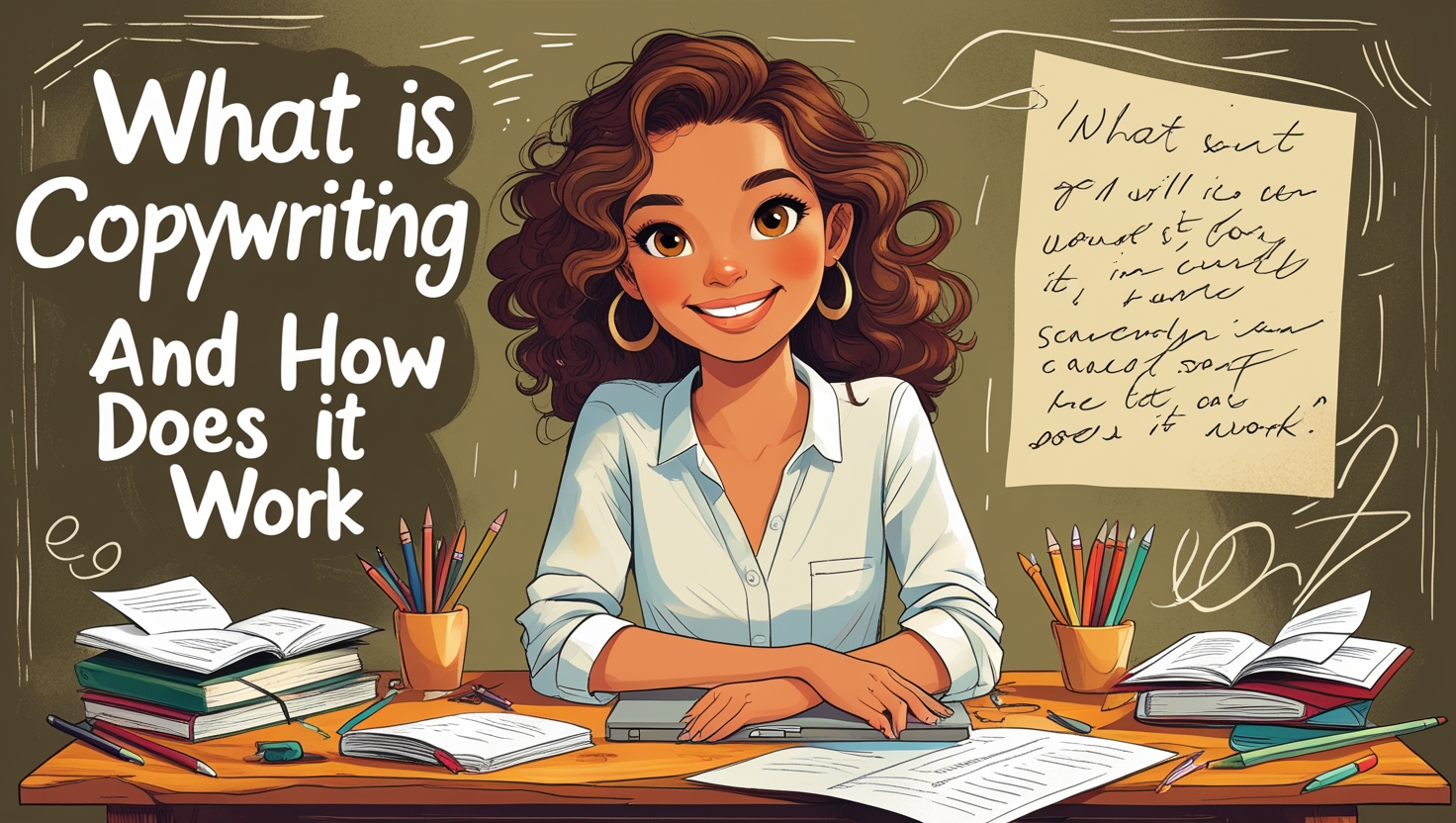
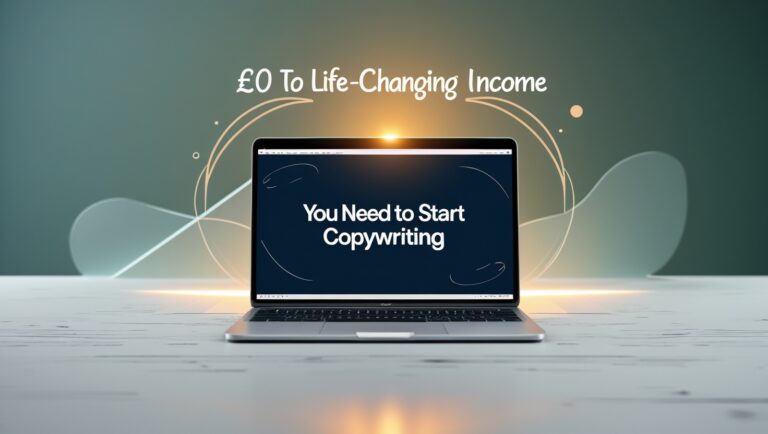


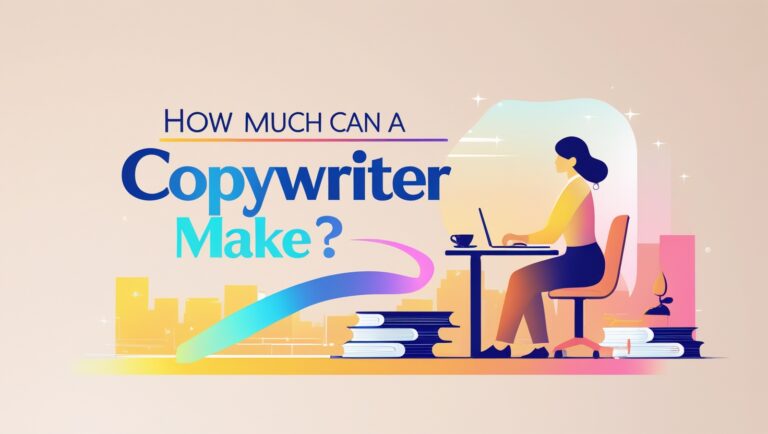
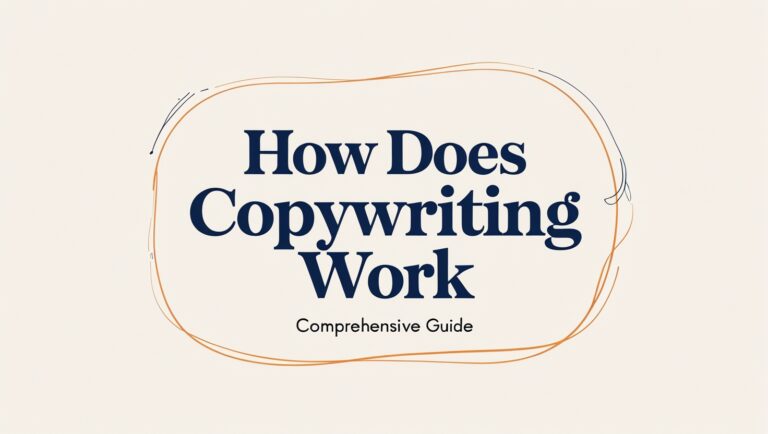

One Comment
Comments are closed.